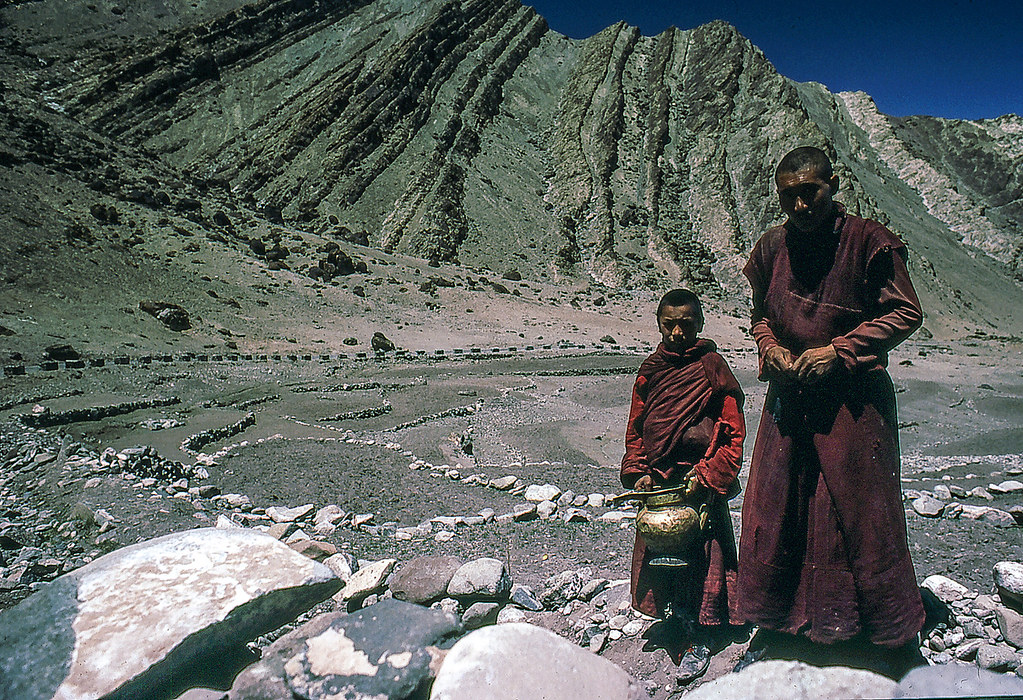We think geopolitics is all about international politics, where nations and national governments are involved. Many disputes over geographical borders are not even bilateral issues between two nations-states; there may be a third and fourth party in the backdrop. Former foreign secretary, Amb. Shyam Saran explains in a recent article how the U.S. forms the third angle in the present military stand-off between India and China in Ladakh. He says, “[China] has started looking at most issues through the prism of the more confrontational relationship it has today with the US. It is looking at India also through that prism and is telling the US, this is a country which cannot even take care of its borders, and you are thinking of this country as a major component of your security relationship in this region”
Yet, geopolitics can also shape the personal and social lives of individuals and communities. The geographical location of the border influences decisions about marriage, local elections, commercial exchanges, cultural expressions, regional unities and transnational affiliations. A recent book by Sara Smith called Intimate Geopolitics discusses how in Ladakh today, matters of the body and the heart, of love, marriage and romantic relationships, become caught up in larger questions of nations, borders and geopolitics. When geopolitics enters the intimate spheres of our lives and governs our deepest emotions – who we may love, trust and befriend, it becomes intimate geopolitics. It affects daily movements, trade, occupations, politics, and domestic relationships.
In Kashmir, parts of Manipur and other militarized zones of India where the Armed Forces Special Powers Act is in place, war becomes indefinite, routinised and normalized to such an extent that people living in these regions become used to the everyday violence, killings, abductions, and random detentions. These places form, as anthropologist Haley Duschinski remarks, zones of exception and social abandonment, where violence is normalised and invisibilised to the rest of the country.
In Ladakh, Sikkim, or Arunachal Pradesh in the Himalayan borderlands of India, home to many Tibetan Buddhist communities, the situation is slightly different. Geo-strategically important in India’s border war with China, these Himalayan regions have been marginal in the national cultural imagination and yet, important for national security. In post-colonial India, different governments have tried in their own way to integrate these populations into mainstream political, economic, and cultural networks, through development, education, and other forms of soft state power. Berenice Guyot Rechard shows in her book Shadow States how development has been a means of establishing a benevolent state presence among these border people. The Indian state has also encouraged and funded Buddhist cultural traditions locally as a method of integrating and keeping these populations within the gravitational pull of the nation.
Yet, problems remain and resurface from time to time, whether it is the form of friction between identities, naming of local place-names, and loss in livelihoods such as yak-herding or tourism. Many of the local Tibetan Buddhist communities have historical and cultural connections with Tibet, through trade, religion or political alliance. When India and China emerged as new nations in the 1940s, both embarked on their individual projects of nation-building and border strengthening, leading to the political-economic integration of the border communities on each side. After the Chinese annexation of Tibet and subsequent border war between India and China, the Himalayan communities on the Indian side were integrated more tightly within their Indian political identity. Over the years, these Himalayan Buddhists have found it strategically necessary to show their Indian allegiance by distancing themselves from Tibet and the Tibetans. This has created a conflict within them as they reconcile their historical connections to Tibet with their contemporary political ties to India.
Further, the military presence in these border regions affect the communities in different ways. In Arunachal Pradesh, many local Tibetic names have been replaced by Hindi names or names of Hindu gods and goddesses, because the army people, unused to Tibetic phonetics, renamed the places where they settled in and spread out their settlements. This has led to a wiping out of cultural landscapes because every place-name comes with a story or legend, and as these names are erased, places lose their cultural moorings. Land and livelihood are also affected when armies move in. In many high-altitude regions, where the Indian army has built firing ranges, yaks, an economic mainstay for many of the Himalayan Buddhist communities, have lost their grazing pastures. With army build up, tourism, which is the main source of contemporary income for these communities, also suffers.
As the battle for borders rages in the high glaciers of the Himalayas, the local communities living in these borderlands fight their own battles. As armies descend on the border zones, and diplomatic channels are simultaneously activated to defuse border tensions on the ground, the people who live in these borderlands are often forgotten. Geopolitics infuse into their everyday lives and livelihoods, making war a felt experience even for those not in war uniforms. Their struggles are more of an everyday form of geopolitics.
Swargajyoti Gohain teaches Sociology and Anthropology at Ashoka University, India. She has published widely on borders, state, culture, politics, and Tibetan Buddhist communities in Northeast India and the Himalayan region.
We publish all articles under a Creative Commons Attribution-Noderivatives license. This means any news organisation, blog, website, newspaper or newsletter can republish our pieces for free, provided they attribute the original source (OpenAxis).

